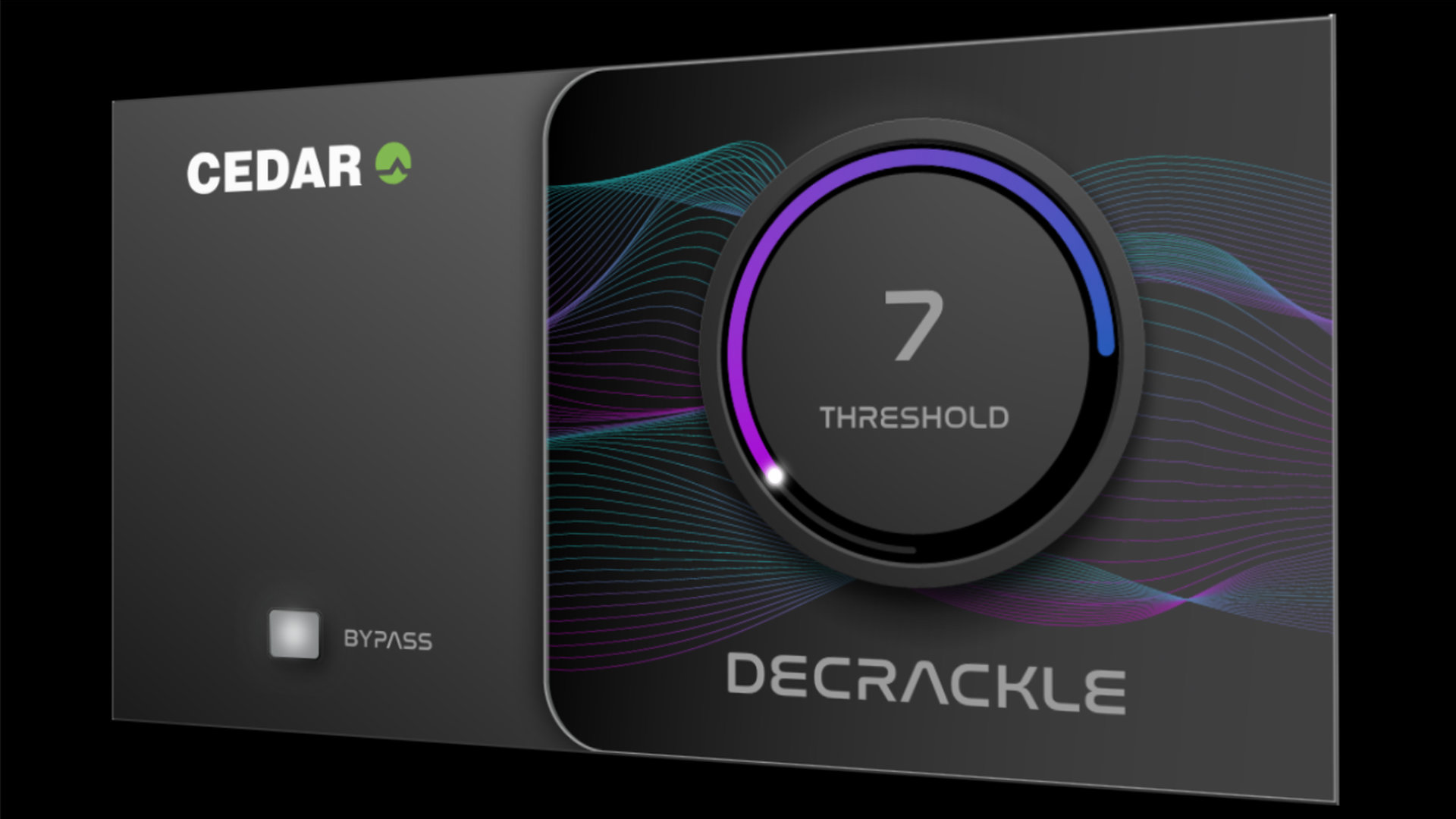CEDAR icons Decrackle wows David Hadzis

David Hadzis began his career as a musician and composer before moving into engineering and production. He has restored the recordings of some legendary voices, including Pharoah Sanders, Nicole Croisille, Sidney Bechet, Bobby Jaspar Quintet, and Esther Ofarim and worked with Petula Clark, Charles Aznavour, and Andy Williams. Recently, he wrote an academic article in the ARSC Journal on preserving a collection of unplayable Montreux Jazz Festival master tapes.
Today, he is United Music Foundation’s project manager and, as a longstanding user of CEDAR Cambridge, he purchased our CEDAR icons plug-ins as soon as he heard of their launch. He was happy to share his story about how he’s already using them to deliver remarkable results for his clients.
The Challenge
David started by describing his current project and its challenges. He told us, “I’m currently restoring the master tape of a 1976 album in preparation for full remastering. One of the main problems - beyond occasional dropouts and sections of tape damage that’ll require intricate editing using safety copies and backing tracks - has been a pronounced high-end crackle, mostly isolated but not limited to one channel.”
“When the album was recorded, it was destined for release on physical formats such as vinyl and cassette. When cutting the lacquer for vinyl, engineers would typically reduce low frequencies (often below 40 Hz) and high frequencies (above 16 kHz) to prevent damaging the cutting stylus, which was sensitive to excessive energy at those extremes. As for cassettes, their limited dynamic range and frequency response often masked finer details and imperfections. In both cases, certain artefacts simply went unnoticed or were deemed acceptable within the constraints of the medium.”
“However, the way we experience music has changed dramatically in the digital era, and original master tapes still hold immense sonic potential. Freed from the physical constraints of vinyl and cassette, we can now remaster recordings with full bandwidth, preserving both the extended low and high ends of the spectrum. However, this reveals every detail, good and bad alike. That’s why I believe that it’s crucial to attenuate or even remove all of the distracting artefacts: crackles, clicks, thumps, mouth noises - anything that might detract from a smooth, immersive listening experience.”
The Solution
Since David has access to a CEDAR Cambridge system, he didn’t feel that he needed to test the new plug-ins before purchasing them; he just took the plunge. “I was already convinced of their capabilities. For me, it was more about having everything readily available to complete the job efficiently. I bought six of the icons (Decrackle, Adaptive Limiter 2, Declip 2, Declick, Auto Dehiss, and Retouch™), but most of my initial experience has been with Decrackle.”
“What truly impressed me was that it proved exceptionally effective in removing the pervasive high-end crackling noise present on the album without introducing artefacts, even at its most aggressive settings. The processing remained remarkably transparent, which is rare at such levels of restoration. This allowed me to preserve the musical detail while eliminating one of the most distracting issues across the entire album.”
“… Decrackle brought both efficiency and sonic integrity to the restoration process - two elements that are often difficult to achieve simultaneously."
“Having such a reliable and transparent tool significantly sped up my workflow and allowed me to focus my attention on the more complex, structural edits. In short, Decrackle brought both efficiency and sonic integrity to the restoration process - two elements that are often difficult to achieve simultaneously.”
Final Words
When asked if he had had any difficulties inserting Decrackle into his workflow he said, “No difficulty at all; it integrated seamlessly into my existing setup, regardless of the operating system and workstation environment. Everything worked right out of the box, with no need for additional configuration or troubleshooting. This kind of flexibility is a huge bonus in a professional environment, especially when time is limited and projects demand immediate results.”
“What really stands out with CEDAR Audio products is the balance between power and transparency. In audio restoration, it’s often a trade-off, so removing noise without compromising musical integrity is no small feat. But with Decrackle, I’ve consistently been able to achieve clean results while preserving the original character of the recordings. I also appreciate the simple and intuitive workflow and responsiveness of CEDAR Audio’s tools. In real-world projects, where deadlines and expectations are both high, having a system that ‘just works’ and delivers high-quality results with minimal fuss is invaluable, so I intend to acquire the full set of CEDAR icons to build a ‘Swiss Army knife’ toolkit for restoration. ”
About CEDAR icons
CEDAR icons are a range of ground-breaking plug-ins that set a new standard in both live sound and post production. The range boasts three processes powered by the near-zero latency CEDAR Quantum™ technology: StageVox and ScreenVox for reducing noise in live singing and speech respectively, plus the industry-standard DNS One dialogue noise suppressor. The range also includes the improved VoicEX 2 Voice Extractor, plus the latest Adaptive Limiter 2, Declick, Decrackle and Declip 2, all at competitive new prices.
CEDAR icons are available directly from our on-line shop GO TO SHOP
Watch the Decrackle introduction video



For further information:
- CEDAR Audio Limited, 20 Home End, Fulbourn, Cambridge, CB21 5BS, United Kingdom.
- t: +44 1223 881771 • e: sales@cedaraudio.com







